Settle
Core Practices of Awakening in Life
Settle
Core Practices of Awakening in Life
Clearing, resting, letting go.
The first practice and capacity of settling serves as a foundation for all of the other capacities of awakening.
Settling is simply coming to center in ourselves, clearing and relaxing our mind, heart, and body. In this process we experience a letting go and resting in the space that remains.
Normally in our daily life, we’re in our habitual patterns of reacting to life, for better or worse. When we want to shift from this habitual way of engaging our lives, either in the midst of our daily life or in formal practice, we have to center.
The practice settling you might well be familiar with already as it is similar to mindfulness and concentration practices. Practically speaking we are simply placing our attention and focusing on our breath. Nothing more, nothing less.
This act of returning to the breath again and again naturally allows settling to occur. We’re not doing anything else intentionally except focusing on the movement and feeling of our breath and breathing. Thoughts and emotions arise, we feel restless in our body, but we return to our breath.
Like dust settling, leaving the air clear and breathable, we let our thoughts and emotions start to calm and dissipate. This practice of settling leaves us with a more clear mind and open heart, and as a result our experience and being becomes more workable and pliable.
We become more receptive and we can more easily direct our attention to anything else we might do, particularly in working with the other capacities of awakening.
How to – The Practice of Settling
This practice is incredibly simple in form and easy to begin. While there are a lot of nuanced instructions to help you deepen your practice of settling, here are a few quick basic pointers on doing the practice:
1. Sit in a comfortable, relaxed, yet attentive posture.
Yes, you could do this lying down or standing, but if you’re new to this practice, I strongly recommend being seated, whether on a meditation cushion or in a chair.
2. Briefly squirm and stretch if needed, then return to your posture.
When you sit formally on a meditation cushion we often rush right into the practice. But transitioning into the practice can actually make the practice more effective. If you feel like you need to roll your neck around, wiggle your hip bones, look around the room, do that. Stay seated and make it brief. Then return to the still posture.
2. Open your eyes slights, rest your hands on your thighs.
Again, there are a lot of variations here – eyes closed, eyes open, hands held in certain positions (often referred to as mudras). However, having your eyes slightly open and your hands resting on your thighs is a great way to put your body into a place of rest and attention.
3. Take a deep breath or two.
Taking a few deep breaths can help you arrive on the cushion as well. This will be the only time in this practice you control your breathing. Don’t worry about how deep or slow it is, but try to make it as deep or slow as is comfortable for you. Then let your breathing become natural and controlled again.
4. Watch your breath, but don’t control it.
Now begin to watch your breath. There are different ways of doing this, but if you’re new, I recommend focusing on the breath coming in and out of your nose, as well as the pause in between breaths. Important: don’t control your breathing. Whether you’re breathing is deep or shallow, fast or slow, smooth or jumpy – let it be. This is settling in the breath. You might notice your breathing change while you do the practice, but the only point is to notice and focus your attention on the breathing.
5. Return to the breath when you are distracted.
If you you find yourself distracted by thoughts, getting involved in stories in your mind, being taken away by emotions, or restless in your body – notice that, then return to your breathing. Don’t provide commentary about any of it. Just take notice, pause, and return to your breathing. Your posture, your breathing, and your attention on your breathing will naturally settle your experience and awareness.
